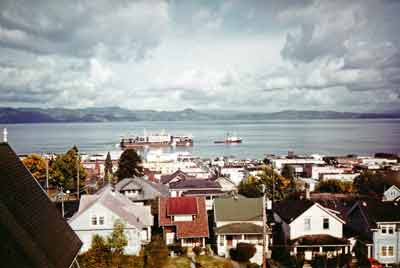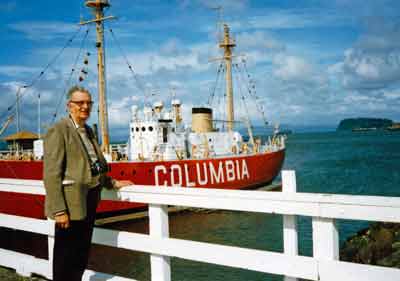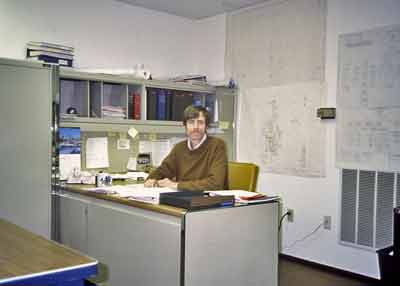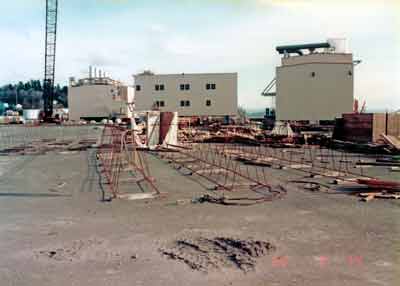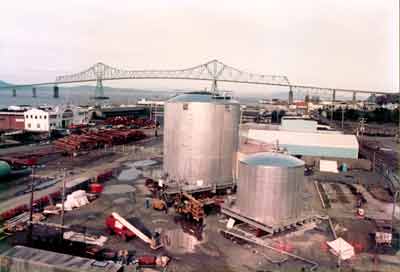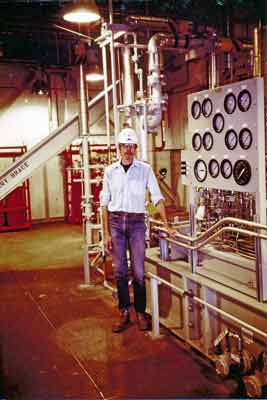Astoria, Oregon 1985-86
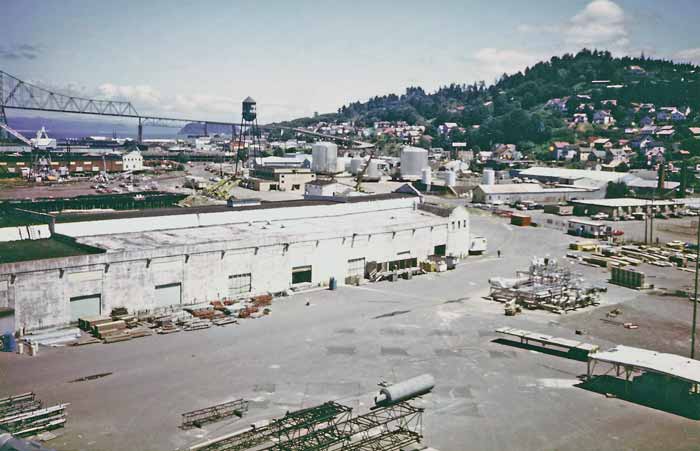 Looking east/upriver from the center of the module assembly yard, on one of the Port of Astoria piers. I was working here for Fluor between June 1985 and July 1986 on a 2-year project to build oilfield production modules for what would become the Lisburne Production Center, an ARCO project being developed east of Prudhoe Bay on the North Slope. I was a mechanical field engineer working for the joint Fluor/ARCO staff; the construction contractor was a joint venture known as Astoria Oilfield Services Inc. The project was split between this yard and another larger module yard site in Portland, where larger and heavier process modules were assembled--those took more than one year to complete. In Astoria, six small drill site modules were completed and shipped in time for the 1985 sealift...signs of their foundation pads can be seen on the pavement. For the 1986 sealift we put together utility modules, including a power plant, warehouse/office building, heating/cooling utility module, some skids with fabricated tanks, and several smaller structures. For this photo I'm probably on the roof of the power plant module. Our offices were in the trailer complex at the far right; the pier warehouse was being used as a fabrication and storage area. Neither of these structures are present today. | |
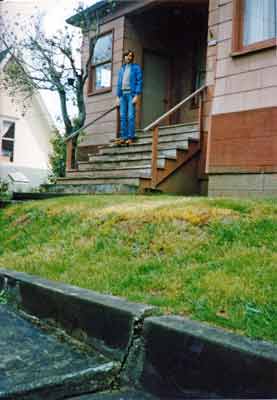 Here's a spring 1986 hero shot of me on the porch steps of 864 8th Street, taken by my father during my parents' visit. The house is on a hill, and the street is also a steep hill. I rented the top floor of this duplex, 42 steps up from the street. I'm about halfway up those steps. |
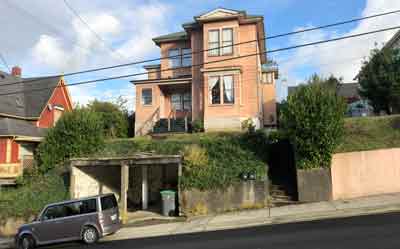 I visited Astoria in November 2018 and here's what the house looked like then. I had the left carport, looks like the ground has settled since then and the carports are no longer usable. There was a washer and dryer in the basement, and hanging on the wall by the fuse box was a ~1930s building permit listing the house number as 432 (!) Here's an older Google view of the house--looks like it has been the same color but only more faded.. |
 The Astoria Column rises 125 feet above one of the highest points in town. It was originally built in 1926 as one of a series of monuments between St. Paul and the Oregon Coast by the then-president of the Great Northern Railroad. The artwork celebrates the discovery of the Columbia River by Robert Gray, the arrival of the Lewis and Clark expedition, and the arrival of John Jacob Astor's expedition ship Tonquin (Astor was NOT on board). It was restored several times, most recently (after this 1986 photo) in 2015. The Astoria Column rises 125 feet above one of the highest points in town. It was originally built in 1926 as one of a series of monuments between St. Paul and the Oregon Coast by the then-president of the Great Northern Railroad. The artwork celebrates the discovery of the Columbia River by Robert Gray, the arrival of the Lewis and Clark expedition, and the arrival of John Jacob Astor's expedition ship Tonquin (Astor was NOT on board). It was restored several times, most recently (after this 1986 photo) in 2015. |
|
|
The power plant module was the heaviest one we had in Astoria, its actual shipping weight was 2,285 (2000 lb) tons. Several of the process modules built in Portland were larger and heavier, their heaviest weighed 2,801 tons. We're not done yet...it's time for loadout. Keep going! | |
